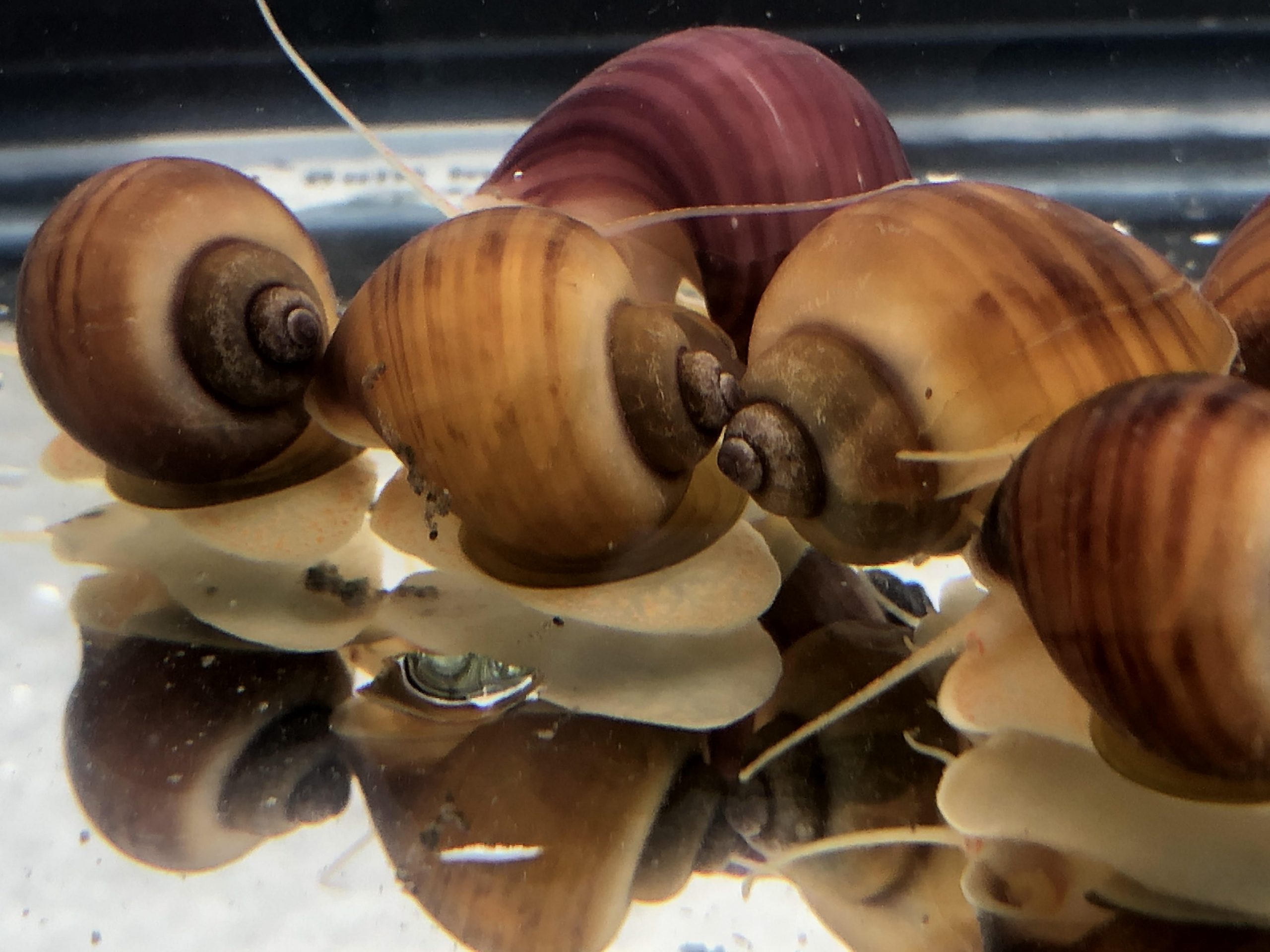
I just wanted to let you know since I had a really bad experience with my first mystery snail and a mainly algae diet. They're actually omnivores or scavengers and protein is really important for their growth and health. Not only that, but it did it's job of eating algae with gusto! So that is proof that they are long lived mollusks. I had an Inca Snail when I was a kid and it lived for 5 or 6 years. I'm hoping that they will eventually breed so I can share some of these snails with my brother who has an outdoor pond. There is about an inch of clearance between the top of the water and the aquairum hood. I don't necessarily have an algae problem, so I give them algae wafers just to make sure they are getting something to eat. I like the colors of these snails and so I bought about 5 of them for my 55 gallon tank. Photo Credit : Photos copyright JJPhoto.dk Gender : Very difficult to determine any external differences between male and female. Most of the time they can be found attached to a structure or tank wall grazing on algae. Tank Region : If you have a sand substrate, they may burrow in the sand.
#Mystery snail full
They’re full of personality, algae-eating, super cute, peaceful, harmless to plants the list is endless. Drop them in an algae wafer when the lights go off for the night. Mystery snails make an anazing addition to your aquarium. They may also sample your aquarium plants. This supplement can be found in the saltwater fish section at the fish store.įoods : An opportunistic grazer they will eat bio-film, crushed flake foods, peas as well as other veggies. Also consider adding a calcium supplement for their shell. If the snail is isolated from fish and kept in good water conditions it may grow back. The tentacles may or may not grow back depending on the situation.

Missing tentacles are usually the result of a fish sampling them. Tank Mates : Avoid keeping them with known snail eaters, such as the Clown Loach and the Dojo Loachĭisease : Most issues are related to irregular shell growths due to improper or poor water quality. You can try to feed them crushed flake foods (separate them from the main tank) or let them graze on any growing algae already in the tank. If the eggs make it, in a couple of weeks you should have tiny snails. The Golden Mystery Snail has a shell that is a golden yellow, making them bold and bright in. The Blue Mystery Snail has a light blue colored shell and a dark blue body with iridescent markings. Temperament / Behavior : Very peaceful little snail that should not be kept with more aggressive fish species, especially loaches.īreeding : They lay their eggs above the water line, so some open humid space should be left in the top part of the tank for them to access for attaching their eggs. Mystery Snail Colors and Types Blue Mystery Snail. Origin / Habitat : Found in multiple places in South America Common Names : Inca Snail, Gold Snail, Mystery Snail


 0 kommentar(er)
0 kommentar(er)
